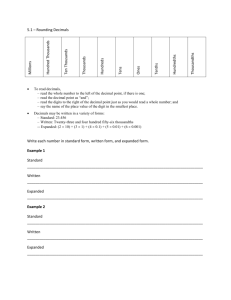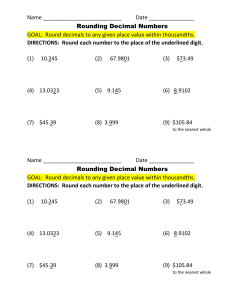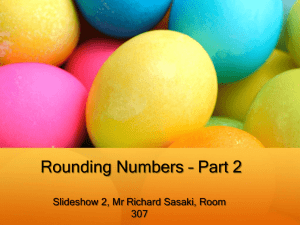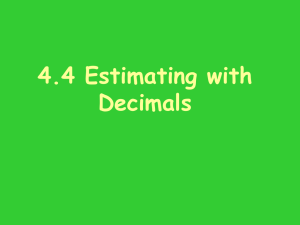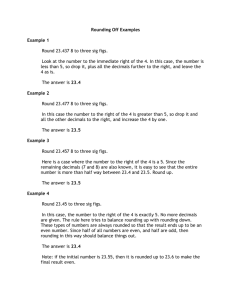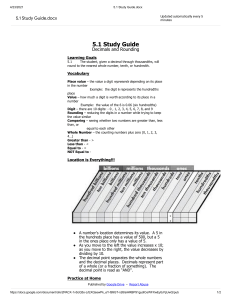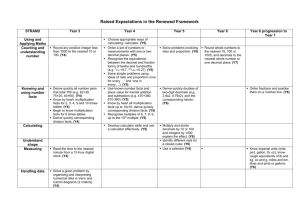Quick Guide to Percentages and Decimals
advertisement
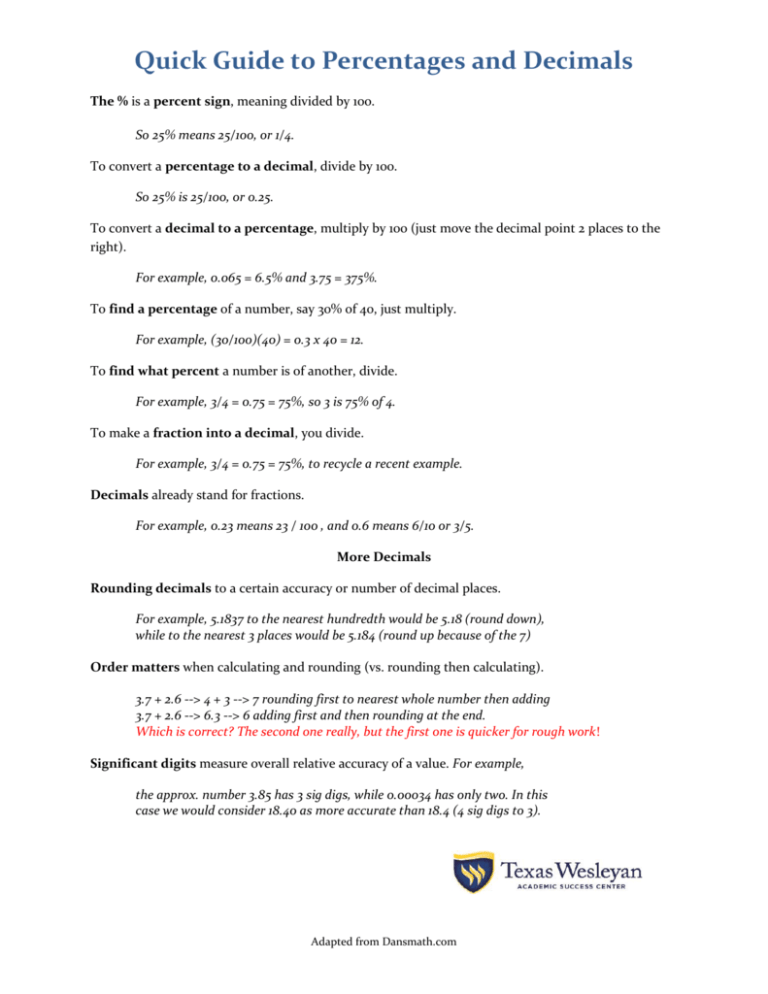
Quick Guide to Percentages and Decimals The % is a percent sign, meaning divided by 100. So 25% means 25/100, or 1/4. To convert a percentage to a decimal, divide by 100. So 25% is 25/100, or 0.25. To convert a decimal to a percentage, multiply by 100 (just move the decimal point 2 places to the right). For example, 0.065 = 6.5% and 3.75 = 375%. To find a percentage of a number, say 30% of 40, just multiply. For example, (30/100)(40) = 0.3 x 40 = 12. To find what percent a number is of another, divide. For example, 3/4 = 0.75 = 75%, so 3 is 75% of 4. To make a fraction into a decimal, you divide. For example, 3/4 = 0.75 = 75%, to recycle a recent example. Decimals already stand for fractions. For example, 0.23 means 23 / 100 , and 0.6 means 6/10 or 3/5. More Decimals Rounding decimals to a certain accuracy or number of decimal places. For example, 5.1837 to the nearest hundredth would be 5.18 (round down), while to the nearest 3 places would be 5.184 (round up because of the 7) Order matters when calculating and rounding (vs. rounding then calculating). 3.7 + 2.6 --> 4 + 3 --> 7 rounding first to nearest whole number then adding 3.7 + 2.6 --> 6.3 --> 6 adding first and then rounding at the end. Which is correct? The second one really, but the first one is quicker for rough work! Significant digits measure overall relative accuracy of a value. For example, the approx. number 3.85 has 3 sig digs, while 0.00034 has only two. In this case we would consider 18.40 as more accurate than 18.4 (4 sig digs to 3). Adapted from Dansmath.com

